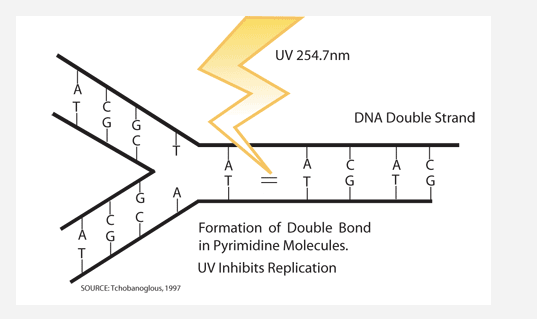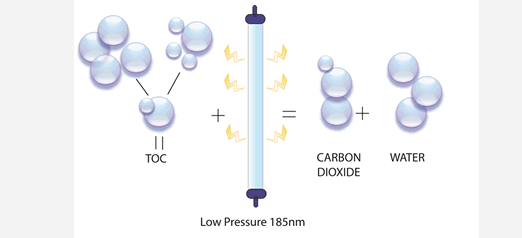The Science of Applying UV for Water Treatment
All living organisms contain DNA (Deoxyribonucleic Acid). DNA provides the mechanism for all functions needed to sustain life. AquaBest disinfection systems emit UV light that penetrates the outer cell membrane of microorganisms, passes through the cell body, reaches the DNA and alters the genetic material. The microorganism is thereby destroyed in a non-chemical manner and is unable to reproduce.When organisms absorb UV light in the range of 200-300nm, DNA and RNA molecules absorb the UV. The DNA molecule contains all the genetic information needed for replication. UV absorption causes disruption of the nucleic material of the double helix strands. This prevents replication, which is lethal to the cell. The absorption of UV radiation at 254nm causes the formation of dimers along the DNA strands. Dimers are A_A (adenine - adenine), GG (guanine -guanine), T-T (thymine-thymine) compounds as opposed to the normal formation of A-T-G-C- etc.

If the dosage is not optimized, then complete inhibition of replication WILL NOT occur. On the other hand, an insufficient UV dosage may cause limited damage to the DNA, which then can, under favorable conditions, repair using repair enzymes. That's why it is extremely critical to impart the OPTIMUM UV dosage to prevent repair. While bacteria have built-in repair enzymes, viruses do not. Therefore, they have to rely on the enzymes of the host cell.


